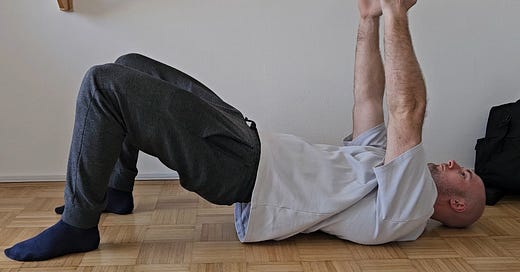Hip thrusts or “bridges” are a popular exercise among many trainees—especially among women, as they’re widely considered an excellent tool for glute activation.
Despite their popularity, there is one often overlooked component that can greatly influence whether we truly engage the right muscles during the exercise—and that is internal rotation.
What is a bridge?
A bridge is an exercise in which the hip dominates the extension movement. Hip extension is an internally rotational action, where the femur transitions from early to late internal rotation.
In the initial phase, when the pelvis is still on the ground, the demand for internal rotation is at its lowest. As the pelvis begins to lift off the floor, the hip transitions into extension. At this stage, the hamstrings take the lead in executing the movement.
At the final point of hip extension (the highest position of the hips), the gluteus maximus takes over dominance, as it is responsible for the final degrees of hip extension.
Keep reading with a 7-day free trial
Subscribe to Human Function & Performance to keep reading this post and get 7 days of free access to the full post archives.




